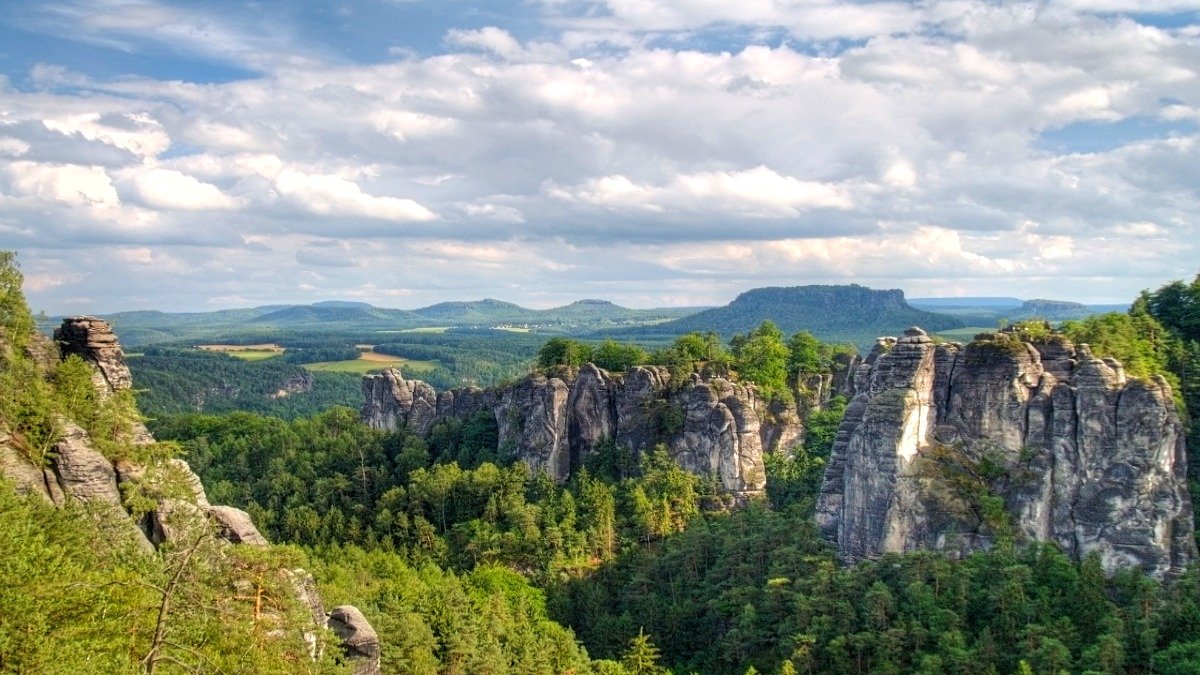Overview:
Germany is a land of stunning natural beauty, rich history, and thrilling outdoor adventures.
From the snow-capped peaks of the Bavarian Alps to the serene lakes of Mecklenburg and the rugged cliffs along the Baltic Sea, Germany offers a diverse range of adventure destinations.
Whether you are a hiker, a rock climber, or a water sports enthusiast, the country has something to offer for every type of adventurer.
In this blog, we explore the top 15 adventure destinations in Germany, delving into their unique geographical features, popular activities, and travel tips for an unforgettable experience.
Table of Contents
1. Bavarian Alps (Berchtesgaden National Park)
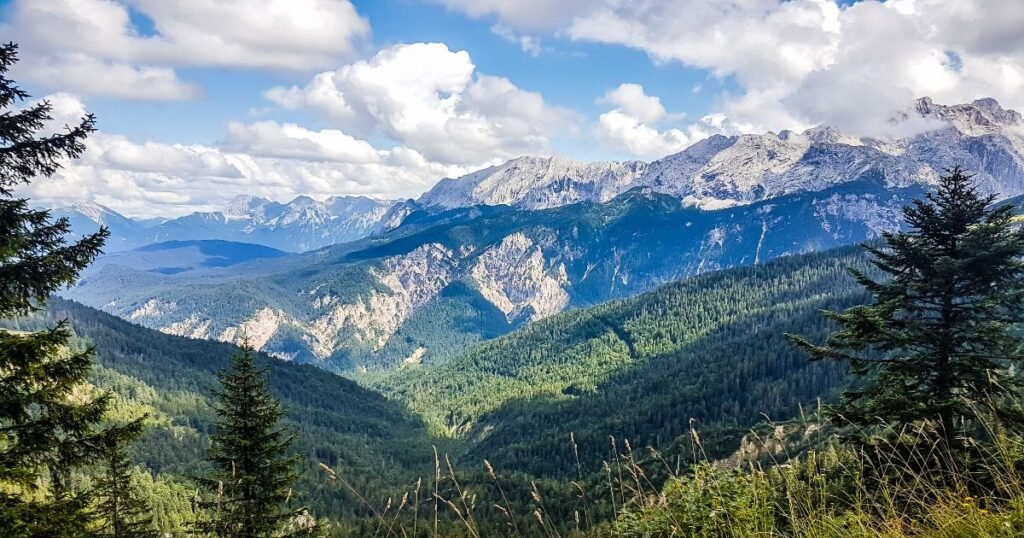
The Bavarian Alps, with their majestic peaks and lush green valleys, are an adventure lover’s paradise. Berchtesgaden National Park, situated in the southeastern corner of Germany, offers breathtaking alpine scenery and numerous outdoor activities.
Geographical Features:
The park is home to towering peaks such as Watzmann (2,713 meters) and crystal-clear lakes like Königssee. Its diverse landscape includes dense forests, wildflower meadows, and deep gorges.
Popular Adventure Activities:
- Hiking: Traverse the Watzmann Traverse, a challenging route with panoramic views of the surrounding Alps.
- Paragliding: Take off from Jenner Mountain for a thrilling flight over the alpine scenery.
- Canyoning: Explore the Almbach Gorge with its cascading waterfalls and natural rock slides.
Best Time to Visit:
May to September for hiking and paragliding; December to March for winter sports.
Travel Tips:
- Safety: Always check weather conditions before hiking or paragliding in the Alps, as conditions can change rapidly.
- Transportation: Best accessed by car from Munich. Local buses and cable cars provide transport within the park.
- Accommodation: Stay in cozy alpine lodges or traditional Bavarian guesthouses for an authentic experience.
2. Black Forest (Schwarzwald)
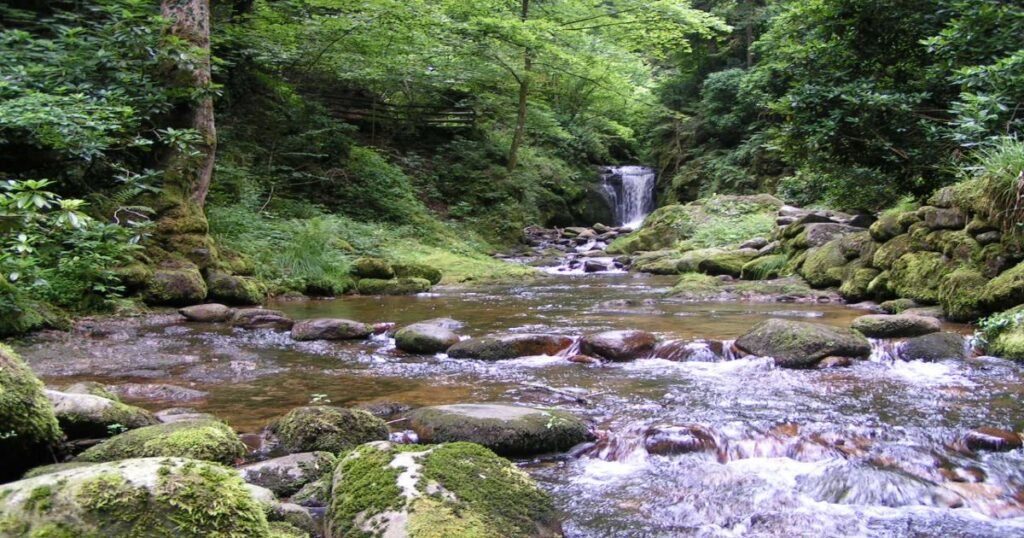
The Black Forest, or Schwarzwald, is a dense, forested mountain range in southwestern Germany, known for its picturesque villages, fairy-tale landscapes, and scenic trails. This region is perfect for hiking, mountain biking, and exploring quaint towns.
Geographical Features:
The region is characterized by thick pine forests, rolling hills, and tranquil lakes like Titisee and Schluchsee. The highest peak, Feldberg, stands at 1,493 meters and offers panoramic views of the surrounding countryside.
Popular Adventure Activities:
- Hiking: Hike the Westweg, a 285-kilometer trail that traverses the entire Black Forest from north to south.
- Mountain Biking: Ride through the forested trails and challenging terrains around Feldberg and Triberg.
- Watersports: Kayak or paddleboard on the serene waters of Titisee Lake.
Best Time to Visit:
April to October for hiking and biking; December to February for winter activities.
Travel Tips:
- Safety: Stick to marked trails while hiking or biking and carry a map, as the forest can be dense and easy to get lost in.
- Transportation: The Black Forest is best explored by car or bike. Local trains and buses connect major towns.
- Accommodation: Stay in traditional Schwarzwald inns or farm stays to experience the region’s hospitality.
3. Saxon Switzerland National Park (Sächsische Schweiz)
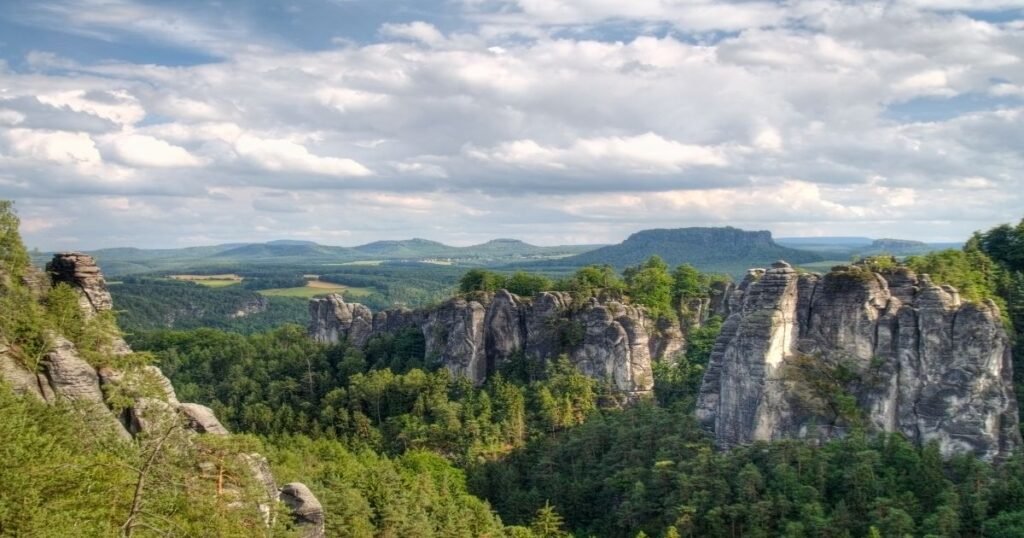
Saxon Switzerland National Park, located near the Czech border, is known for its unique rock formations, deep gorges, and picturesque river valleys. It’s a haven for rock climbers and hikers looking for an exciting adventure.
Geographical Features:
The park’s distinctive landscape includes towering sandstone cliffs, rocky outcrops, and the winding Elbe River. The iconic Bastei Bridge offers spectacular views of the rugged terrain.
Popular Adventure Activities:
- Rock Climbing: Scale the challenging sandstone formations, suitable for both beginners and experienced climbers.
- Hiking: Walk the Malerweg Trail, a scenic route that passes through lush valleys, cliffs, and ancient ruins.
- Boating: Take a leisurely boat ride on the Elbe River, surrounded by majestic rock formations.
Best Time to Visit:
May to October for hiking and climbing.
Travel Tips:
- Safety: Sandstone climbing requires special techniques and equipment. Consider joining a guided climbing tour.
- Transportation: Accessible by train from Dresden. Local buses connect different areas of the park.
- Accommodation: Stay in charming guesthouses or mountain huts within the park for easy access to trails and climbing spots.
4. Lake Constance (Bodensee)
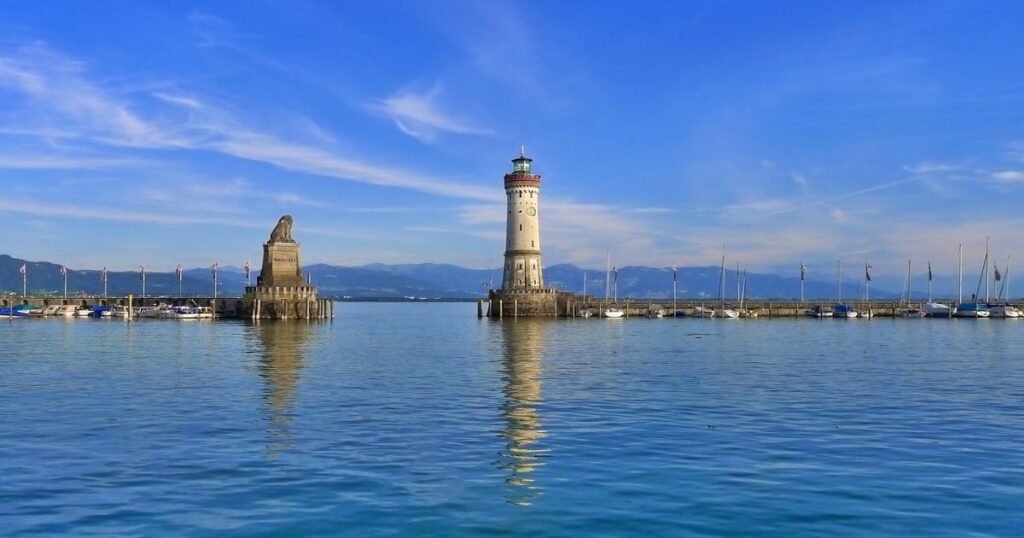
Lake Constance, shared by Germany, Austria, and Switzerland, is one of Europe’s largest lakes. It offers a wide range of water sports and cycling activities against a backdrop of stunning alpine scenery.
Geographical Features:
The lake’s crystal-clear waters are surrounded by rolling vineyards, orchards, and charming lakeside towns like Lindau and Konstanz.
Popular Adventure Activities:
- Sailing and Windsurfing: The lake’s steady winds make it ideal for sailing and windsurfing enthusiasts.
- Cycling: Ride the Bodensee-Radweg, a 260-kilometer cycling path that circles the entire lake.
- Kayaking: Paddle along the serene waters and explore hidden coves and inlets.
Best Time to Visit:
May to September for water sports and cycling.
Travel Tips:
- Safety: Wear a life jacket while engaging in water sports and be mindful of weather changes.
- Transportation: The lake is well-connected by trains and ferries. Renting a bike is a great way to explore the area.
- Accommodation: Choose from lakeside hotels, cozy B&Bs, or campsites for a scenic stay.
5. The Harz Mountains
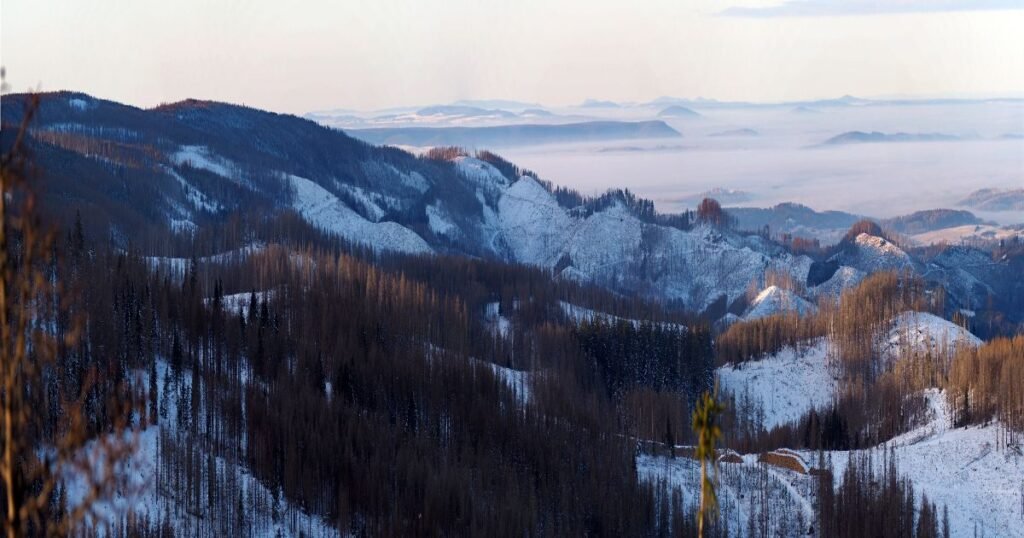
The Harz Mountains, located in central Germany, are a lesser-known gem for adventure seekers. With its dense forests, misty valleys, and charming villages, the Harz is ideal for hiking, mountain biking, and skiing.
Geographical Features:
The region features dense beech and spruce forests, rolling hills, and rugged cliffs. The highest peak, Brocken, stands at 1,141 meters and offers sweeping views of the surrounding area.
Popular Adventure Activities:
- Hiking: Climb to the summit of Brocken via the scenic Harz Witches’ Trail (Harzer Hexenstieg).
- Mountain Biking: Tackle challenging trails that wind through dense forests and over rocky terrain.
- Winter Sports: Ski and snowboard in the Harz’s well-groomed ski resorts, such as Wurmberg.
Best Time to Visit:
May to October for hiking and biking; December to March for winter sports.
Travel Tips:
- Safety: The Harz Witches’ Trail can be challenging in parts; wear sturdy boots and carry a map.
- Transportation: Accessible by car or train. Narrow-gauge steam trains operate within the region and offer a scenic journey.
- Accommodation: Stay in rustic guesthouses, mountain inns, or ski lodges, depending on the season.
6. Bavarian Forest National Park (Bayerischer Wald)
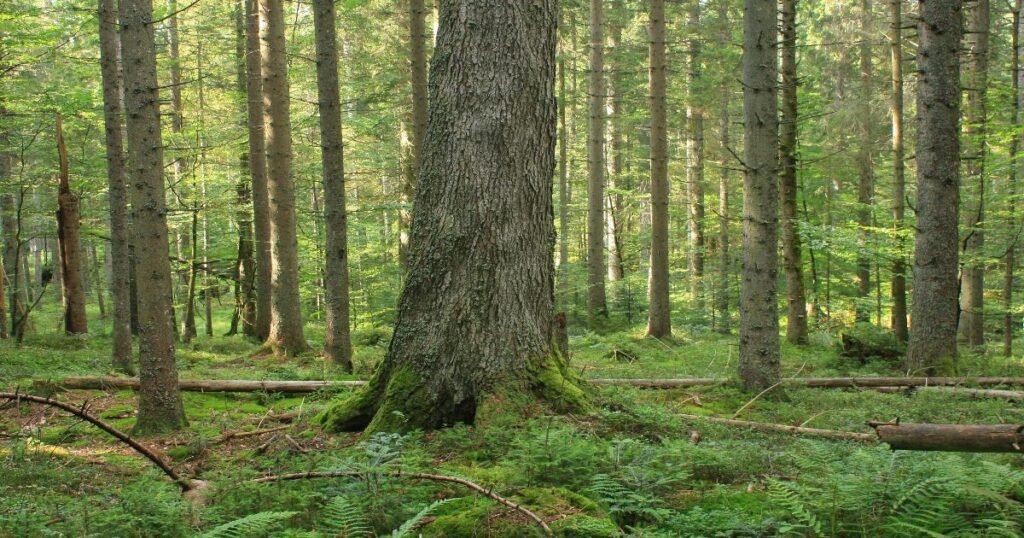
The Bavarian Forest National Park is Germany’s oldest national park, a sprawling wilderness that stretches along the border with the Czech Republic. With dense forests, pristine rivers, and a thriving wildlife population, this park is an excellent destination for adventure seekers.
Geographical Features:
The park is known for its thick coniferous forests, hilly terrain, and glassy lakes like Großer Arbersee. The surrounding area includes the Lusen and Rachel Mountains, which offer panoramic views over the forested expanse.
Popular Adventure Activities:
- Hiking: Explore the wilderness on the Goldstein Trail, a long-distance hiking route that passes through the heart of the park.
- Tree-Top Walking: Experience the Tree-Top Walk, a 1,300-meter-long canopy walkway that provides a bird’s-eye view of the forest.
- Wildlife Watching: Spot lynxes, wolves, and otters in their natural habitat or visit the animal enclosures within the park.
Best Time to Visit:
May to October for hiking and wildlife watching; December to February for snowshoeing.
Travel Tips:
- Safety: Stay on marked trails to avoid disturbing the wildlife, and wear appropriate footwear for hiking on rugged terrain.
- Transportation: Accessible by train from Munich and Nuremberg. Local buses and shuttles operate within the park.
- Accommodation: Choose from eco-friendly lodges, family-run guesthouses, or camping facilities within the park.
7. North Sea Coast (Nordseeküste)
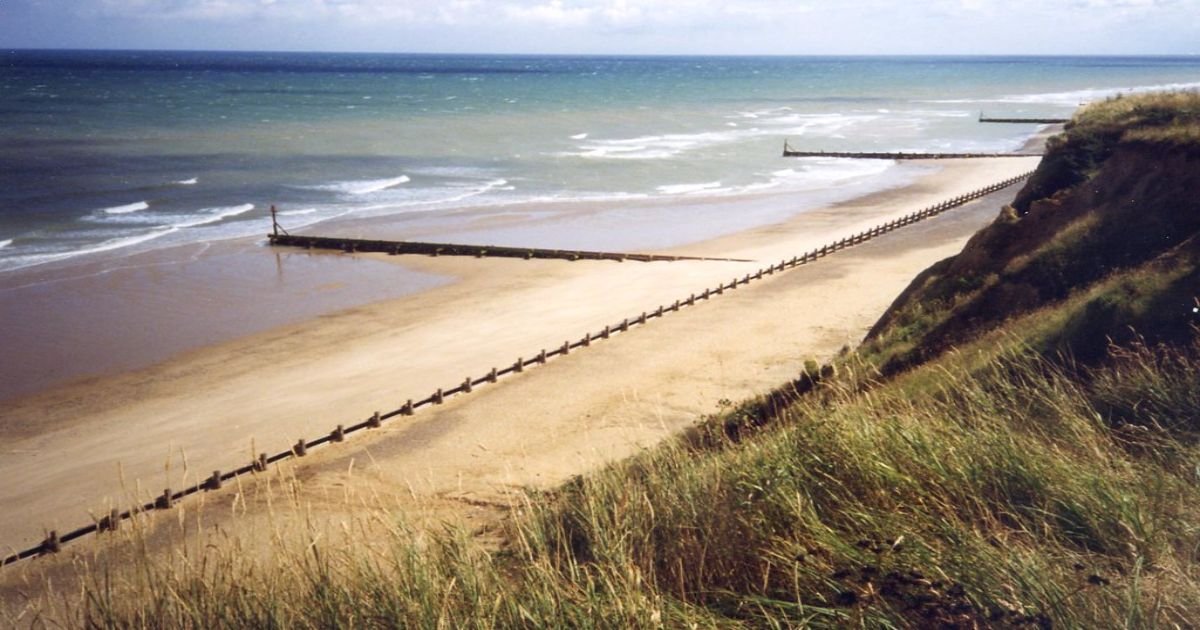
The North Sea Coast of Germany is a unique adventure destination, known for its tidal flats, long sandy beaches, and idyllic islands. This coastal region is ideal for water sports, bird watching, and exploring the Wadden Sea UNESCO World Heritage Site.
Geographical Features:
The coastline features vast tidal flats, dunes, and salt marshes. The East Frisian and North Frisian Islands, such as Sylt and Borkum, are dotted along the coast, offering a serene escape.
Popular Adventure Activities:
- Mudflat Hiking (Wattwandern): Walk across the tidal flats during low tide and explore the Wadden Sea’s rich marine life.
- Kitesurfing and Windsurfing: The steady winds make the North Sea Coast a prime spot for kitesurfing and windsurfing.
- Bird Watching: Spot migratory birds like geese, waders, and oystercatchers at the Wadden Sea National Park.
Best Time to Visit:
May to September for water sports and mudflat hiking; October to March for bird watching.
Travel Tips:
- Safety: Always go mudflat hiking with a guide, as tides can change quickly and make the flats dangerous.
- Transportation: The region is accessible by car or train. Ferries and boats connect the mainland to the islands.
- Accommodation: Stay in seaside resorts, island cottages, or camping sites for a true coastal experience.
8. Baltic Sea Cliffs (Jasmund National Park)

Jasmund National Park on the Baltic Sea coast is famous for its towering white chalk cliffs and dense beech forests. Located on the island of Rügen, this park is a UNESCO World Heritage Site and a must-visit for nature enthusiasts.
Geographical Features:
The park’s most iconic feature is the Königsstuhl (King’s Chair) cliff, a 118-meter-high chalk formation overlooking the Baltic Sea. The park also includes ancient beech forests, tranquil lagoons, and rugged shorelines.
Popular Adventure Activities:
- Hiking: Walk along the Hochuferweg Trail, a cliff-top path that offers stunning views of the chalk cliffs and the Baltic Sea.
- Kayaking: Paddle along the base of the cliffs to see their majestic height and unique formations from the water.
- Cycling: Explore the park and the island of Rügen on well-maintained cycling paths.
Best Time to Visit:
April to October for hiking and kayaking.
Travel Tips:
- Safety: Be cautious near cliff edges as they can be slippery and unstable.
- Transportation: Accessible by car or train from Berlin and Hamburg. Buses connect the park to nearby towns on Rügen Island.
- Accommodation: Stay in seaside hotels, rustic cabins, or campgrounds on Rügen Island for easy access to the park.
9. The Swabian Jura (Schwäbische Alb)
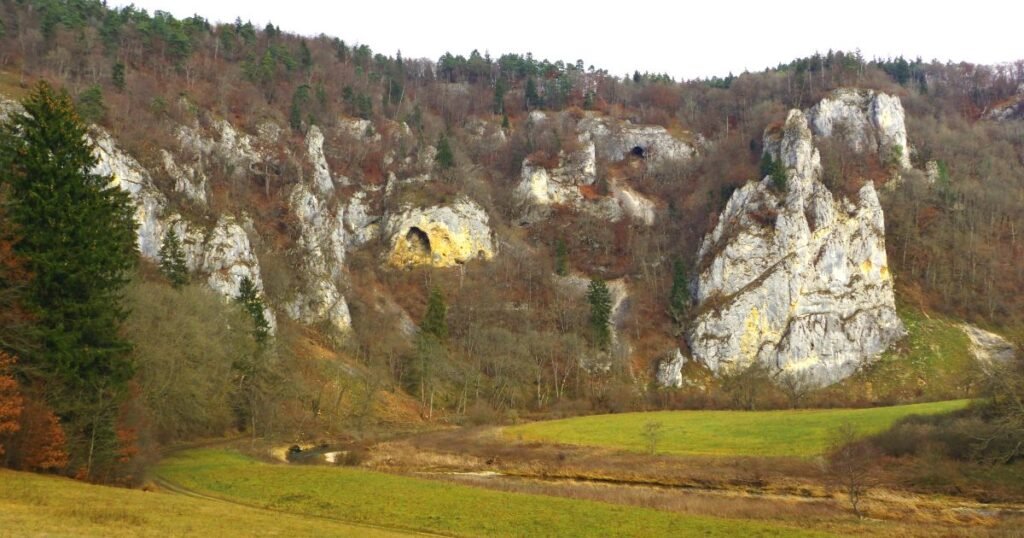
The Swabian Jura, a low mountain range in southwestern Germany, is known for its rugged limestone cliffs, picturesque valleys, and numerous caves. It’s an ideal destination for rock climbing, caving, and hiking.
Geographical Features:
The region is characterized by rolling hills, limestone plateaus, and karst landscapes. The area is dotted with over 2,500 caves, including the famous Blautopf, a deep blue spring-fed cave.
Popular Adventure Activities:
- Rock Climbing: Scale the steep cliffs of the Upper Danube Valley, a renowned climbing destination.
- Caving: Explore the Laichingen Vertical Cave, one of the deepest vertical caves in Germany.
- Hiking: Trek along the Albsteig Trail, a 350-kilometer trail that showcases the region’s diverse landscapes.
Best Time to Visit:
April to October for hiking and climbing.
Travel Tips:
- Safety: Wear proper climbing gear and consider joining guided caving tours if you’re inexperienced.
- Transportation: Best accessed by car. Regional trains connect larger towns like Ulm to nearby areas.
- Accommodation: Stay in countryside inns, family-owned guesthouses, or camping grounds.
10. Eifel National Park

Eifel National Park is a rugged landscape of volcanic hills, deep gorges, and pristine lakes. Located in western Germany, this park offers a range of outdoor activities for those seeking an adventure in nature.
Geographical Features:
The park’s unique terrain includes volcanic craters, tranquil lakes like the Laacher See, and dense beech forests. The Eifel is part of the larger Volcanic Eifel Geopark, which highlights the region’s volcanic history.
Popular Adventure Activities:
- Hiking: Follow the Eifelsteig Trail, a long-distance hiking route that winds through the park’s most scenic spots.
- Kayaking and Canoeing: Paddle on the park’s lakes and rivers, enjoying the tranquil surroundings.
- Cycling: Ride the Vennbahn Cycle Route, one of Europe’s longest converted railway tracks.
Best Time to Visit:
May to October for hiking and cycling.
Travel Tips:
- Safety: Check trail conditions before hiking, as some areas can be steep and slippery.
- Transportation: Accessible by car or train. Local buses connect major attractions within the park.
- Accommodation: Choose from lakeside cabins, cozy inns, or camping sites.
11. The Bavarian Lakes (Chiemsee, Tegernsee, and Königsee)
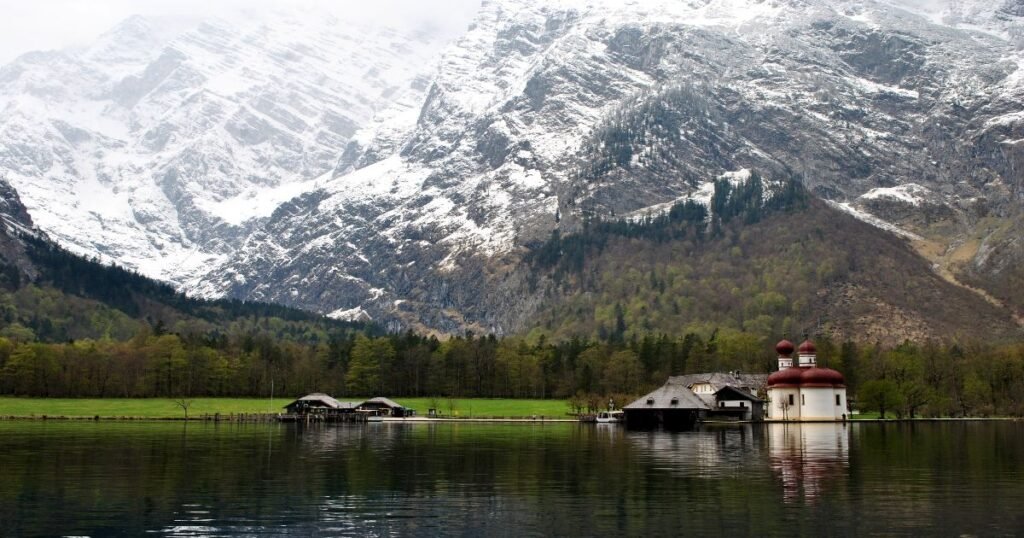
The Bavarian Lakes region is known for its crystal-clear waters, scenic alpine surroundings, and a variety of water sports. Located in southern Germany, these lakes are perfect for both relaxation and adventure.
Geographical Features:
The region includes famous lakes like Chiemsee, Tegernsee, and Königsee, surrounded by rolling hills and alpine peaks. Each lake has its own unique charm, with tranquil waters and scenic hiking trails.
Popular Adventure Activities:
- Sailing and Boating: Enjoy sailing or boating on Chiemsee, known as the “Bavarian Sea.”
- Hiking and Cycling: Explore the shores of Tegernsee and Königsee on well-marked hiking and cycling paths.
- Diving: Dive in the clear waters of Königsee to explore underwater rock formations.
Best Time to Visit:
May to September for water sports and hiking.
Travel Tips:
- Safety: Wear life jackets while boating and be mindful of weather changes on the lakes.
- Transportation: Best accessed by car or regional trains from Munich. Boats and ferries operate on the lakes.
- Accommodation: Stay in lakeside hotels, alpine lodges, or cozy B&Bs for a relaxing retreat.
12. Thuringian Forest (Thüringer Wald)
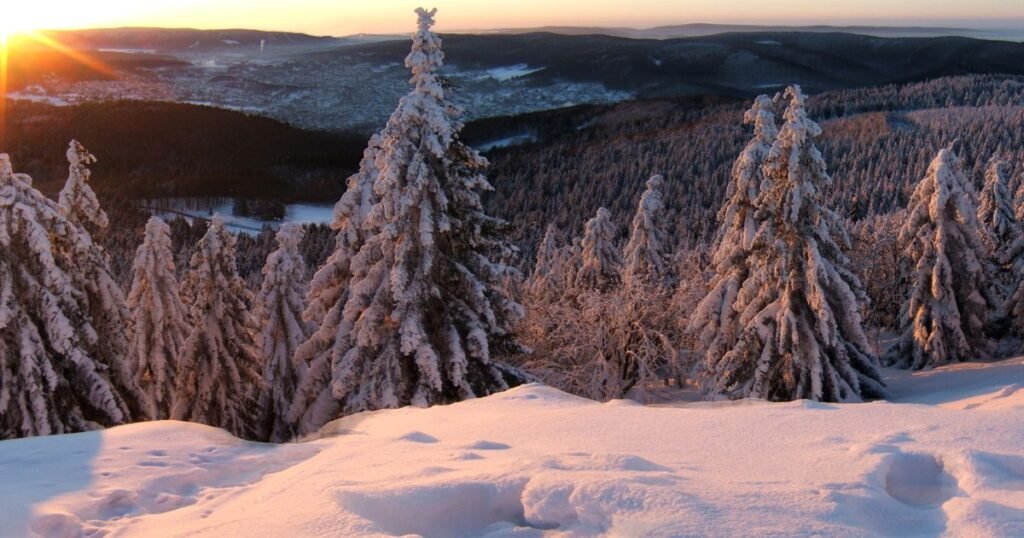
The Thuringian Forest, located in central Germany, is a vast range of densely wooded hills, serene meadows, and charming villages. It is a paradise for hikers, nature lovers, and winter sports enthusiasts, making it one of Germany’s premier adventure destinations.
Geographical Features:
The Thuringian Forest is known for its extensive spruce and beech forests, rolling hills, and scenic viewpoints. The Rennsteig Trail, Germany’s oldest long-distance hiking route, traverses the ridgeline of the forest, offering panoramic vistas.
Popular Adventure Activities:
- Hiking: Embark on the 170-kilometer-long Rennsteig Trail, which crosses the forest from Hörschel to Blankenstein.
- Mountain Biking: The region has an extensive network of cycling trails that cater to both beginners and experienced riders.
- Cross-Country Skiing: During winter, the Thuringian Forest transforms into a wonderland with over 1,600 kilometers of cross-country ski trails.
Best Time to Visit:
May to October for hiking and cycling; December to March for winter sports.
Travel Tips:
- Safety: Check trail maps and weather conditions before setting out, especially in winter.
- Transportation: Easily accessible by car or train from Erfurt and Weimar. Buses connect smaller towns and trailheads.
- Accommodation: Stay in rustic mountain lodges, cozy guesthouses, or modern hotels in nearby towns like Oberhof.
13. Berchtesgaden National Park
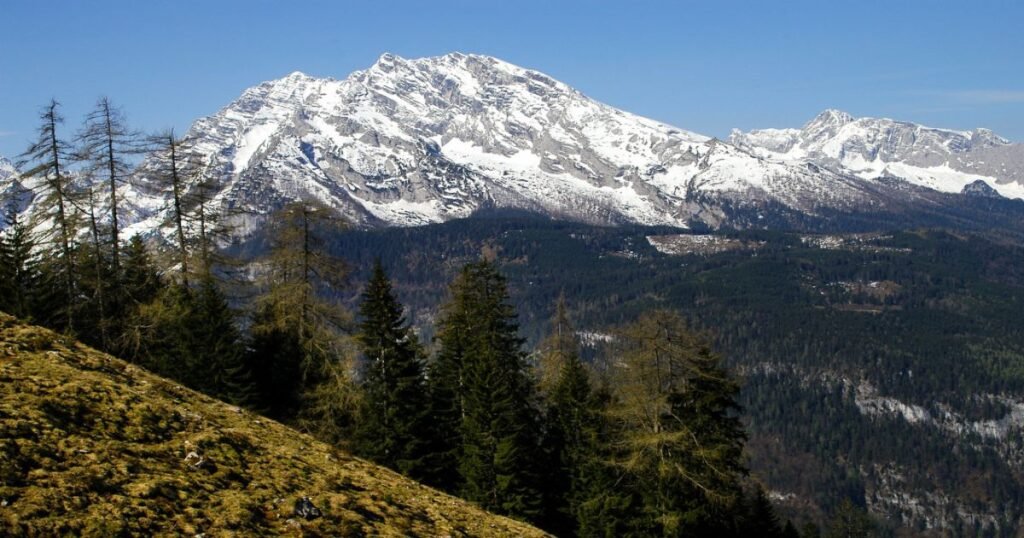
Berchtesgaden National Park, located in southeastern Bavaria, is a breathtaking alpine wonderland of rugged mountains, deep gorges, and crystal-clear lakes. It is one of Germany’s most picturesque national parks, perfect for outdoor adventures and nature photography.
Geographical Features:
The park’s dramatic landscapes include towering peaks like Watzmann Mountain, serene lakes like Königssee, and the Eisriesenwelt Ice Caves. The park is also home to rich biodiversity, with species like chamois, golden eagles, and marmots.
Popular Adventure Activities:
- Hiking: Explore the Jenner Mountain Trail for stunning views of Königssee and Watzmann.
- Boating: Take a boat ride on the emerald waters of Königssee and visit the iconic St. Bartholomä Church.
- Ice Climbing and Skiing: Try ice climbing at the nearby Eisriesenwelt Ice Caves or ski down the slopes of Jenner Mountain.
Best Time to Visit:
June to October for hiking and boating; December to March for skiing and ice climbing.
Travel Tips:
- Safety: Be cautious on high-altitude trails and carry appropriate gear for ice climbing and skiing.
- Transportation: Accessible by car or bus from Salzburg and Munich. A cable car takes visitors up Jenner Mountain.
- Accommodation: Stay in alpine lodges, family-run hotels, or campgrounds for an immersive experience.
14. The Spreewald Biosphere Reserve
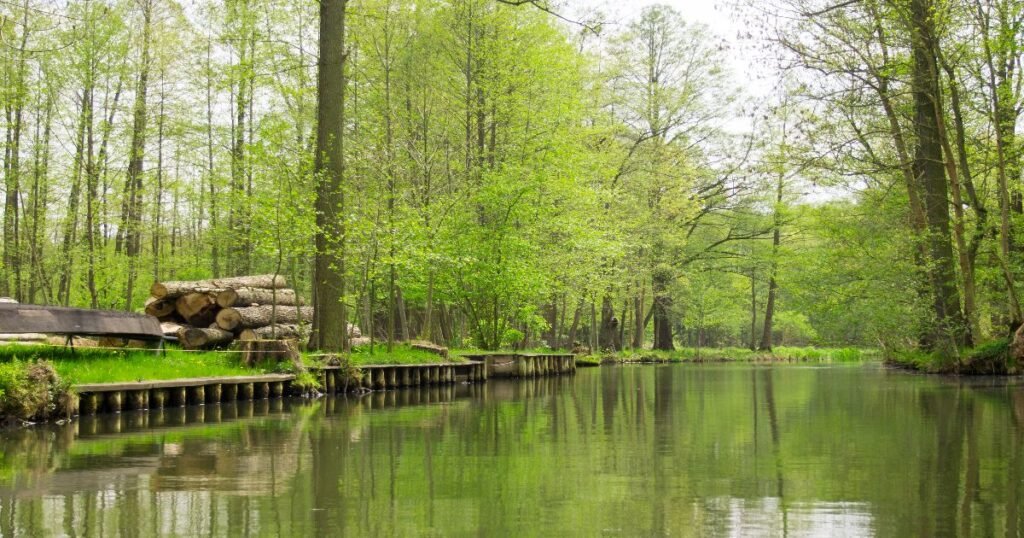
The Spreewald Biosphere Reserve, located south of Berlin, is a lush, waterlogged paradise of meandering rivers, tranquil canals, and dense woodlands. This UNESCO biosphere reserve is ideal for kayaking, cycling, and exploring traditional Slavic culture.
Geographical Features:
The reserve is characterized by its network of over 300 kilometers of navigable waterways, dense forests, and traditional villages. The area is rich in flora and fauna, including rare bird species and vibrant meadows.
Popular Adventure Activities:
- Kayaking and Canoeing: Paddle through the scenic waterways, passing by meadows, forests, and charming wooden bridges.
- Cycling: Ride along the Gurken-Radweg (Cucumber Cycle Route), a 250-kilometer trail that winds through the reserve.
- Wildlife Watching: Spot rare bird species and native wildlife along the tranquil shores of the Spree River.
Best Time to Visit:
April to October for kayaking and cycling.
Travel Tips:
- Safety: Follow marked water trails and be mindful of the area’s protected status when exploring.
- Transportation: Accessible by car or train from Berlin. Rent kayaks or canoes at local outfitters.
- Accommodation: Stay in traditional guesthouses, eco-friendly lodges, or riverside camping sites.
15. The Moselle Valley (Moseltal)
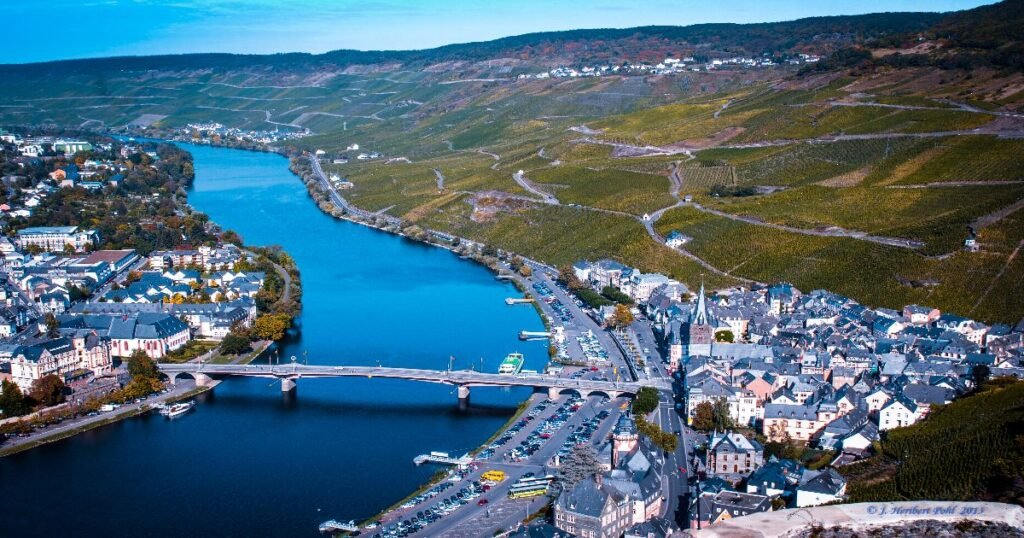
The Moselle Valley, located in western Germany, is famous for its winding river, steep vineyards, and medieval castles. It is one of the most scenic river valleys in Europe, perfect for wine tasting, cycling, and castle tours.
Geographical Features:
The Moselle River meanders through a landscape of terraced vineyards, historic towns, and lush green hills. The valley is dotted with picturesque castles like Eltz Castle and Cochem Castle, providing a fairytale-like backdrop for adventures.
Popular Adventure Activities:
- Cycling: Ride along the Mosel Cycle Path, a 248-kilometer route that follows the river and passes through charming wine villages.
- Hiking: Explore the Moselsteig Trail, a 365-kilometer long-distance trail with panoramic views of the river and vineyards.
Best Time to Visit:
May to October for cycling and wine tasting.
Travel Tips:
- Safety: Wear a helmet while cycling and be cautious on narrow roads along the river.
- Transportation: Accessible by car or train from Cologne, Trier, or Frankfurt. Bicycles can be rented in major towns.
- Accommodation: Stay in wine country inns, historic guesthouses, or vineyard hotels for an authentic experience.
Also Read: Best 14 Tourist Attractions in Germany
Conclusion
Germany is a country brimming with diverse landscapes and thrilling outdoor adventures.
From the dramatic chalk cliffs of Jasmund National Park to the tranquil waterways of the Spreewald Biosphere Reserve and the rugged peaks of the Bavarian Alps, there is an adventure destination for every kind of traveler.
Each destination offers unique activities, stunning views, and unforgettable experiences that highlight Germany’s natural beauty and cultural heritage.
Whether you’re a hiker, a cyclist, a climber, or a water sports enthusiast, Germany’s varied terrain and rich ecosystems are waiting to be explored.
Plan your trip around the best times to visit, follow safety guidelines, and immerse yourself in the breathtaking beauty of Germany’s great outdoors.
FAQs
1. What is the best time of year to visit Germany for outdoor adventures?
The best time to visit Germany for outdoor adventures is typically from May to October, when the weather is mild and trails are open. Winter sports enthusiasts should visit between December and March.
2. Are the hiking trails in Germany suitable for beginners?
Yes, many hiking trails in Germany are suitable for beginners. National parks like the Black Forest and the Bavarian Forest have well-marked easy-to-moderate trails. For more challenging hikes, consider the Bavarian Alps or the Harz Mountains.
3. What kind of accommodation options are available in Germany’s adventure destinations?
Germany’s adventure destinations offer a range of accommodation options, including mountain lodges, guesthouses, eco-friendly hotels, and camping grounds. Some regions, like the Moselle Valley and the Bavarian Alps, also feature unique stays in historic castles or wine country inns.
4. Is it safe to explore Germany’s national parks and forests alone?
Germany’s national parks and forests are generally safe to explore alone. However, it’s advisable to inform someone of your plans, stay on marked trails, and carry a map, GPS, and emergency supplies, especially in remote or high-altitude areas.
5. Can I rent equipment like bikes or kayaks at these destinations?
Yes, most adventure destinations in Germany have rental facilities for bikes, kayaks, canoes, and other outdoor equipment. It’s best to book rentals in advance, especially during peak travel seasons.
6. Do I need to book accommodations in advance for adventure destinations in Germany?
Yes, especially during peak seasons. Booking in advance ensures that you have a place to stay, as popular adventure spots can fill up quickly.
7. Are adventure activities in Germany family-friendly?
Many destinations, like the Black Forest and Lake Constance, offer family-friendly activities such as gentle hiking trails, cycling paths, and guided tours suitable for all ages.
8. Do I need special permits for adventure activities in Germany’s national parks?
In most cases, no special permits are needed for hiking and climbing, but certain areas may have restrictions. Always check local regulations before planning your trip.
With this guide to the top 15 adventure destinations in Germany, you’re all set to embark on an unforgettable outdoor journey.

